Botanical Names
Aquilaria spp. (Aquilaria agallocha Roxb., Agallochum malaccense (Lamk) Kuntze, Aquilariella malaccensis (Lamk) v. Tieghem)
Common Names
| Malaysia | Gaharu, tengkaras, karas. |
| English | Agarwood, malayan aloewood, malayan eaglewood. |
| Indonesia | Gaharu, kikaras (Sundanese), mengkaras (Sumatra). |
| Myanmar | Agar. |
| Vietnam | Tr[aaf]m h[uw] [ow]ng. |
| French | Bois d’aigle, calambac, calambour. |
Family
Thymelaeaceae
Introduction
‘Gaharu’ is treasured for its three principal uses namely medicine, perfume and incense. It has been used for traditional medicinal purposes since antiquity and still being used in Ayuverdic, Tibetan and East Asian medicine. Five species of Aquilaria namely Aquilaria malaccensis, A. microcarpa, A. hirta, A. rostrata and A. beccariana were found in Malaysia. Traditionally, agarwood is indiscriminately collected from the wild, thus threatening the plant population. Efforts are currently being made to cultivate Aquilaria and inoculate the plants chemically and organically to stimulate and enhance the production of the resinous hardwood.[1][2]
Morphological Features
‘Gaharu’ is a perennial woody plant that grows up to 36 m and bole diameter up to 60 cm depending on the species. The barks are smooth and whitish in colour. Buttresses are up to 2 m high. The leaves are simple, alternately arranged, dark green in colour, oval in shape and about 8 cm in length and 4 cm in width. The flowers are bell in shape measuring 5-6 mm long, green or dirty green in colour with soft short hairs outside. The seeds are egg shape, measuring about 10 mm X 6 mm and dark brown in colour.[1][2]
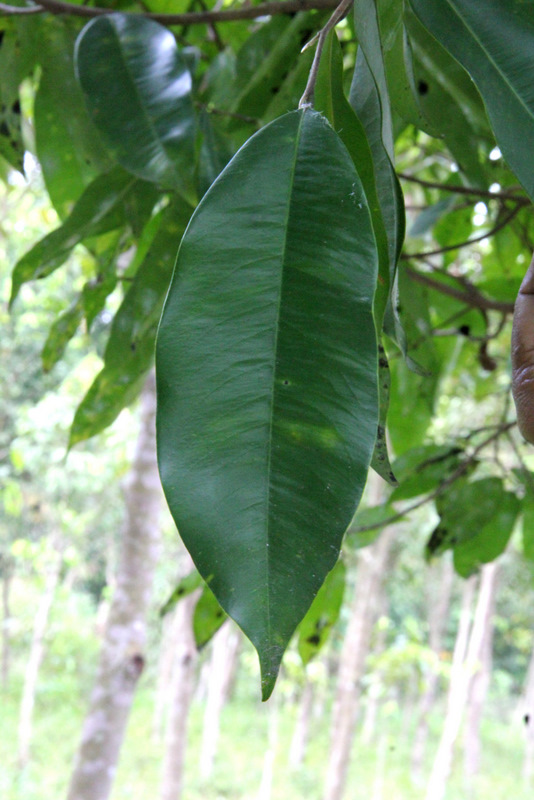
Medicinal Properties and Usage
In Malaysia, agarwood mixed with coconut oil is used as a liniment, and its concoction, to treat rheumatism and other body pain. Agarwood is also prescribed for jaundice, smallpox and for various abdominal complaints, treatment of dropsy, heart palpitation and as a tonic during pregnancy, after childbirth and for diseases of female genital organs. The oleoresin obtained from steam distillation of the wood is used in making the famous “attar” commonly used by Muslim to lace prayer clothes. Its uses range from a general perfume to an important religious occasion by Muslims, Buddhists and Hindus. Incense sticks are also used in prayer during festivals and ceremonies by Indians and Chinese.[1][3]
Soil Suitability and Climatic Requirement
‘Gaharu’ is commonly found in primary and secondary forests, ranging from the plains and on the hillsides up to 750 m in altitude. It grows best under wet evergreen and evergreen forests and rarely found in semi-evergreen forests. The heavy mineral soils are highly preferred even though it can also grow well on sandy loam soils. It requires an annual rainfall of 3000-5000 mm with the temperature of 23-300C.[1]
Field Preparation
Land Preparation
Prior to planting, normal field operations such as land clearing, disc ploughing and rotovation are to be conducted to eradicate weeds and improve the soil structure. GML (ground magnesium limestone) at 100 g/planting hole are applied to increase the soil pH to the required level. TSP (triple super phosphate) at 50 g/hole was applied as the basal fertiliser. The size of a planting hole is approximately 30 cm x 30 cm x 20 cm. The field drainage system should be established in areas where waterlogged is a threat.[1]
Production of Planting Materials
The plant can be propagated by seeds. The seeds to be used should be obtained from fully matured fruits. The seeds are short-lived. Thus only the freshly collected seeds are used. The seeds start to germinate at 3-4 weeks after sowing. These seedlings are then transferred to the polybags at about 2 weeks after germination. They are then kept under about 50% shade in the nursery and ready for field plating when it grows to about 60 – 80 cm high.[1]
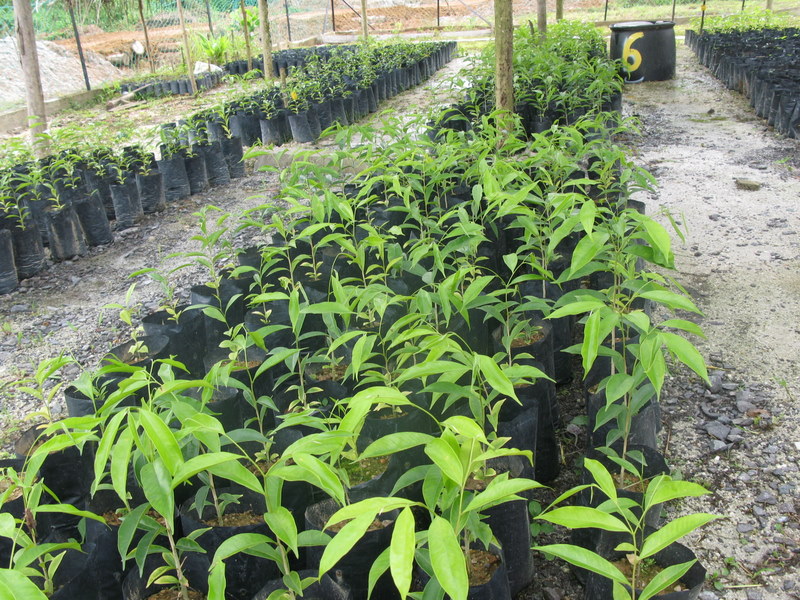
Field Planting
The recommended planting distance for ‘gaharu’ is about 3 m x 3 m. This will give the population density of about 1,100 plants/ha. Planting should be done at the beginning of the planting seasons to minimise the transplanting shock. Organic mulch such as dried leaves can be applied to conserve the soil moisture.[1]
Field Maintenance
Fertilisation
Two types of fertilisers are recommended that is chicken dung and inorganic fertiliser, NPK (15:15:15). Chicken dung at the rate of 15kg/plant is given when planting followed by yearly application of about 5 kg/plant for the next 2 years. The inorganic fertiliser is given at 200 g/plant for the second year, 300 g/plant for the third year and subsequently at 500 g/plant from the fourth year onwards.[1]
Weed Control
Proper weed control within 50 cm around the planting point is very important to ensure there is no competition for nutrition and space between the weeds and the plants. It can be done manually by using cangkul or by spraying with contact herbicides. Use of organic mulch can help to reduce weeds around the planting point.[1]
Water Management
For large scale planting, application of supplementary irrigation is not practicable. However, to minimize planting shock, field planting should be carried out at the on set of raining seasons. The use of organic mulch such as dried grasses or lallang can help to conserve soil moisture at planting.[1]
Pest and Disease Control
Currently, there are no serious pest and disease problems in the commercial production of ‘gaharu’. However, for the early stages of crop growth, heavy infestation with scale insects or grasshopper can affect the vigour of the crop. Scale insects can be controlled by practicing good sanitary practices.[1]
Harvesting
The plants that have been inoculated are ready for harvesting on the 5th to 6th year planting. At this stage the diametre of the stem is about 25 cm. ‘Gaharu’ are harvested by chopping the outer bark using parang or axe. Harvesting is usually carried out at 3-5 months intervals. The harvested inoculated barks or core are then sent for further processing and distillation of the essential oils.[1]
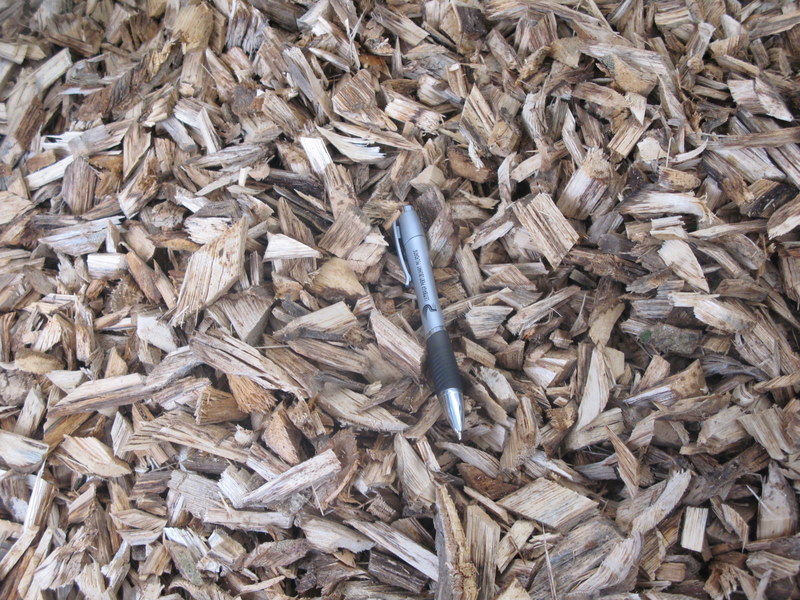
Postharvest Handling
The post harvesting activities before distillation process includes chopping of the bark into smaller pieces, grinding and soaking of the grounded materials in water. One hectare of ‘gaharu’ could produce about 500 kg of extracted oil.[1]
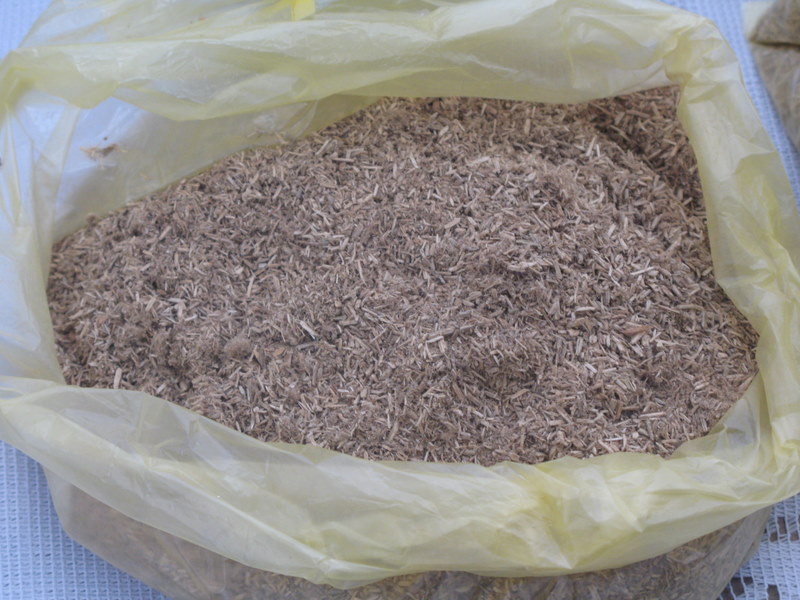
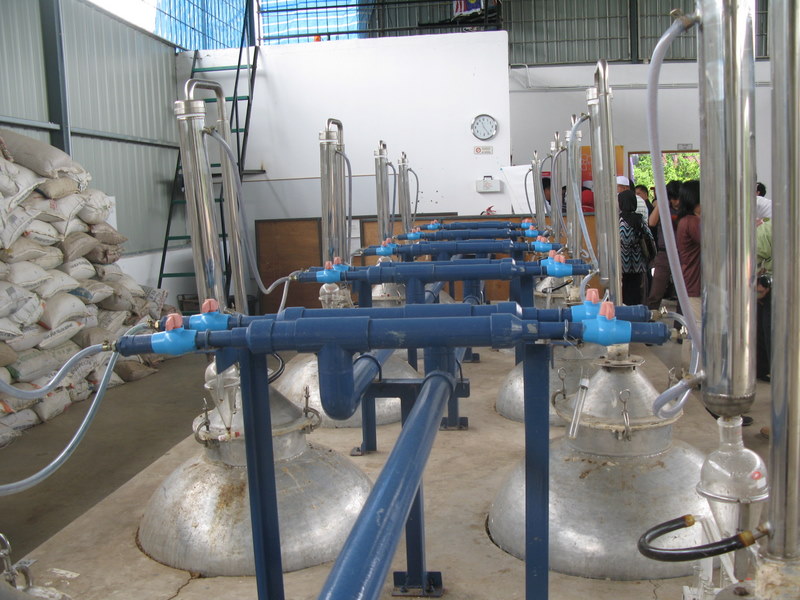
Estimated Cost Of Production
The total production cost for a 6 year old crop is estimated at RM95,000/ha. The main components of the cost are the planting materials, land preparations, agricultural inputs and labour for crop maintenance. Thus, for a total yield of yield 500 kg/ha, the average cost of production for a kilogram of the oils produced is RM190. The cost of production was estimated based on the current inputs cost during writing of this article.[1]
Read More
References
- Anon (2010). Panduan Lengkap Penanaman Gaharu. Kuala Lumpur : Department of Agriculture Peninsular Malaysia
- Ng, L.T., Chang Y.S. and Kadir, A.A. (1997). A review on agar (gaharu) producing Aquilaria species. Journal of Tropical Forest Products 2(2): pp. 272-285
- Burkhil I. H. (2002): A Dictionary of the Economic Products of the Malay Peninsular. Kuala Lumpur: Ministry of Agriculture Malaysia
